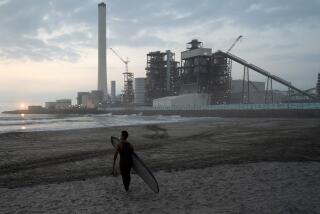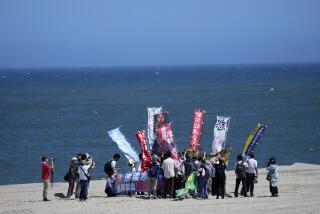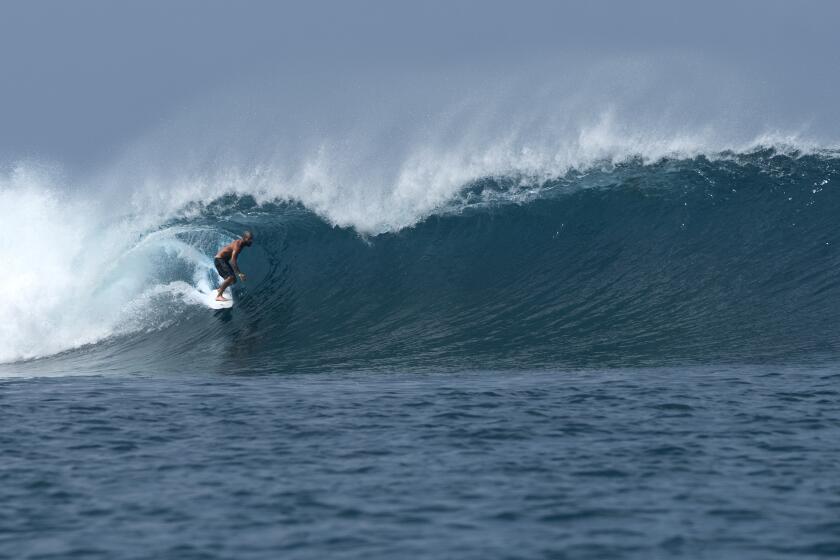Radioactivity in Fukushima plant water hits new high
- Share via
TOKYO — Puddles with 10 million times more radioactivity than would be found in water in a normally functioning nuclear reactor have been discovered at the crippled Fukushima Daiichi facility, Japanese officials said Sunday, raising new questions about the extent of damage to reactor No. 2 and the threat to workers there.
The water was found in the turbine building of the No. 2 reactor, and Tokyo Electric Power Co. said it was trying to pinpoint the source of the radiation. The Nucelar and Industrial Safety Agency said the water was 10,000 times as radioactive as the water at the No. 3 reactor trubine building where two workers were injured last week.
It was not immediately clear to what extent the discovery of the extremely high radiation at reactor No. 2 would slow efforts to stabilize the facility, which was severely crippled by the March 11 earthquake and tsunami that rocked Japan.
Photos: Sifting through the remains of a home
At a news conference Sunday afternoon, Chief Cabinet Secretary Yukio Edano said, “We are committed to no further such accidents” adding that removing the highly radioactive water would “take time.” It was unclear whether the water could be removed without humans performing the work, or by some other means.
Naoto Sekimura, a nuclear expert from the University of Tokyo, told NHK news that the radioactive water found at reactor No. 2 may be coming from the damaged suppression pool, a doughnut-shaped reservoir at the bottom of the reactor’s containment vessel. The suppression pool at reactor No. 2 is believed to have been damaged in an explosion several days after the quake and tsunami.
Edano, speaking earlier on a Sunday TV talk show, said the radioactive water is “almost certainly” seeping from a reactor core, the Associated Press reported.
On Saturday, the utility admitted that it had failed to adequately warn workers about dangerous radioactive water at the plant.
Edano chastised the company, known as TEPCO, saying Saturday that it needed to share information more quickly and, unless it does so, “the government will not be able to give appropriate instructions and [the company] will make workers, and eventually the public, distrustful,” according to Kyodo News.
TEPCO officials apologized for the lapse but also noted that workers had ignored alarms that had alerted them to high levels of radiation in the work area.
Leakage of radiation beyond the main reactor buildings continues to be a cause for concern.
Levels of radioactive iodine as much as 1,250 times higher than the benchmark considered safe were found in seawater about 1,000 feet from the complex, officials said Saturday. However, experts said the radiation would quickly disperse and would not pose a threat to people nearby or to sea life.
People within 12 miles of the plant were evacuated shortly after the earthquake and tsunami struck; those living within 18 miles have been told to stay indoors to avoid radiation exposure. But in recent days, the government has urged people living within 18 miles of the plant to leave their homes voluntarily as supplies in the region have been hard to come by.
Asked at the news conference Sunday afternoon whether the government was considering mandating evacuation of the 18-mile zone, Edano said the government was “keeping all options open.”
Photos: Sifting through the remains of a home
More to Read
Sign up for Essential California
The most important California stories and recommendations in your inbox every morning.
You may occasionally receive promotional content from the Los Angeles Times.











